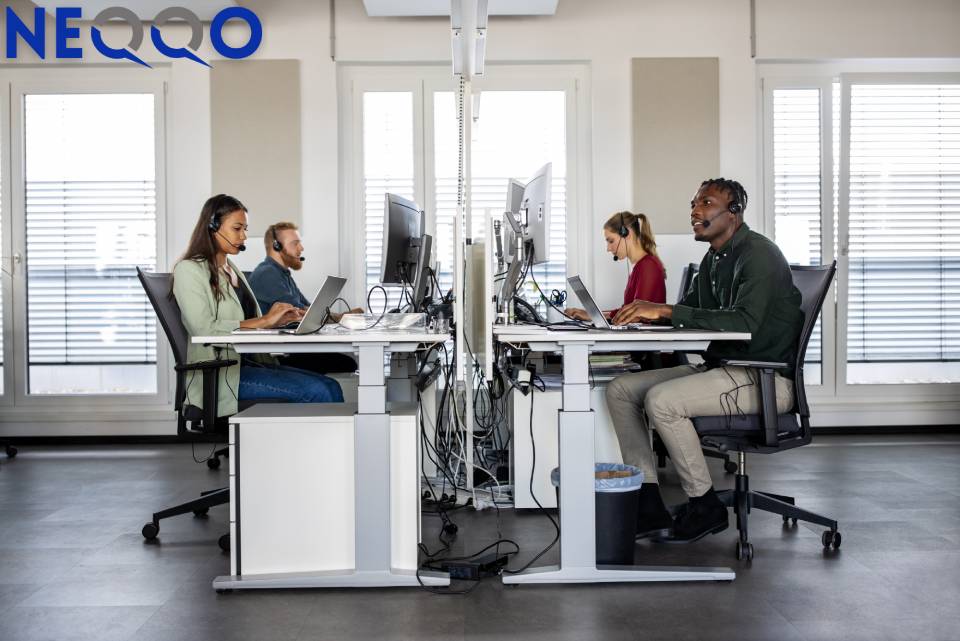Introduction
In customer support services, delivering top-notch service is always a must. To be successful, an organization needs to learn and grow continuously. Organizations must know the areas they lack and ways to improve them for continuous improvement. The rising demand for excellent customer service is forcing businesses to shift their focus to quality improvement. Enterprises are adopting various techniques to improve and grow, including the Quality Assurance (QA) calibration program.
In the call center industry, QA calibration is necessary to ensure that all the call center agents and the organization’s operations are evaluated using the same criteria. This process enables consistent and fair scoring of agent interactions, which, in turn, impacts job satisfaction and motivation.
Implementing a successful QA calibration program requires various steps. Let’s look at the steps to guide the call center on quality assurance calibration.
1. Develop a Calibration Process
Before moving towards full-fledged QA calibration, it is essential to create a calibration process. This is considered the first step of QA calibration. There are multiple approaches for creating a calibration process, one of which involves reviewers and the call center agents reviewing and discussing the calls together. However, reviewers can also monitor the calls separately and deliver the feedback to the agents afterward.
Being clear and transparent is the key to improving human resources’ performance. If an agent and reviewer work together, it allows the agents to be a part of the monitoring process and lets the agent show their concerns.
2. Establish a Standard Evaluation Form
The calibration process’s second step is establishing a standard evaluation form. This form will serve as a guide for QA specialists to evaluate the call center agents consistently. The evaluation form should be comprehensive, including all relevant evaluation criteria. The form should also be easy to use. A standard evaluation form is crucial in achieving consistency in scoring and feedback. This form is used by the QA specialists while reviewing the call recordings or live interactions between an agent and a customer.
3. Provide Training
After establishing an evaluation form, the next step is to provide Training for all QA specialists. The Training should cover the evaluation criteria for the form and guide how to use the form to score agent interactions accurately. Ensuring that all QA specialists are on the same page and have the same understanding and skills to consistently evaluate the call center agents is essential. The Training should also include examples of excellent and poor agent-customer interactions to provide a clearer picture and better understanding.
4. Conduct Calibration Sessions
The next step is to conduct calibration sessions. In these sessions, a group of QA specialists listens to the same recorded agent interaction and scores it using the evaluation form. After scoring the interaction, the group should discuss their scores and come to a consensus on the final score. These calibration sessions’ primary purpose is to ensure that all QA specialists consistently use the evaluation form and scoring agent interactions. This step is essential for consistency and fair scoring.
5. Self-scoring Agent Calibration Sessions
As the name states, agents listen to and score the same customer interaction recordings in such calibration sessions. Once scoring is done, the call center agents can discuss the scoring to be on the same page.
This step allows the call center agents to participate in the calibration process. Such sessions also allow leaders to learn where their agents could be improved and will enable them to design specialized training programs.
6. Use a Quality Assurance Tool
As businesses progress towards digitalization, a digital QA tool is becoming essential. Calibration sessions create a huge pile of data, making it difficult to do manually. A wide range of digital platforms can do these manual works.
One of these platforms is NEQQO which has in-built calibration functionality to schedule and conduct the sessions and identify the inconsistencies.
7. Document Calibration Results
It is essential to document the results of each calibration session. This documentation should include the scores assigned by each QA specialist and each call center agent, the group’s consensus score, and any notes on areas of disagreement and improvement. Documenting calibration results is crucial in tracking progress and identifying areas that need further Training. The documentation also helps track the program’s progress and adjust as required.
8. Review Calibration Results
After each calibration session, reviewing the results and identifying any areas that need improvement is essential. For example, if there is a significant difference between the scores assigned by different QA specialists and agents, this may indicate that more Training is required. Reviewing the results regularly will help ensure that the calibration process is effective and that the evaluation form is used consistently.
9. Form and Process Adjustment as Required
Over time, the process must be adjusted to align with your call center’s goals and objectives. Reviewing the form, Training, calls, and scores regularly and making changes as required is essential. Any changes to the QA process must be communicated to the operations and production teams. Such information must be shared with the teams before changes are implemented.
10. Calibrate Continuously
Calibration is not a one-time event. To maintain consistency, the calibration process must be conducted regularly. The primary purpose of continuous calibration is to find opportunities and areas for improvement. As business metrics change continuously, adopting and implementing such changes in your process is crucial. By constantly training and monitoring your agents’ interactions, you can ensure they consistently offer excellent customer service. If not, then ongoing training and monitoring help with continuous development.
Conclusion
Calibration is a critical process in a call center’s QA program. It ensures that all QA specialists use the same criteria to evaluate agent interactions and provides consistency and fair scoring. By establishing a standard evaluation form, providing Training, conducting calibration sessions, documenting & reviewing results, adjusting the evaluation form as needed, and continuously training and monitoring, you can ensure that your quality assurance program is effective and provides valuable feedback to your agents. This ultimately leads to delivering quality services, higher customer satisfaction, better agent performance, and increased efficiency.
With a call center solution like NEQQO, you can grow your business by managing quality, increasing productivity, improving the customer experience, and maintaining compliance. You can now book a quick demo and see our product in action.
Request for Demo






